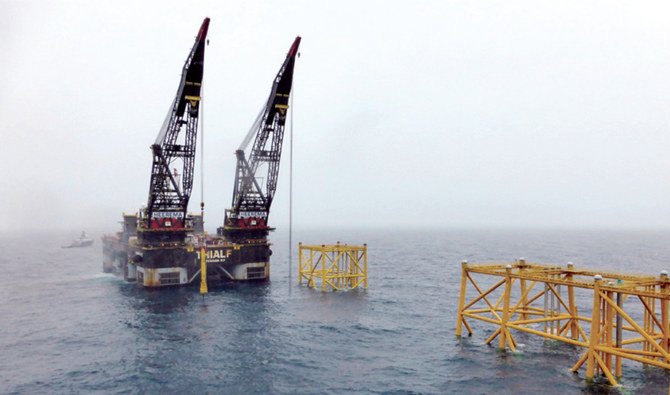
- ARAB NEWS
- 15 Jul 2025

LONDON: Oil traders are offering cargoes far in advance as rapidly vanishing demand drives physical crude prices to multi-decade lows, with some US oil valued at $10 a barrel.
The market is caught between a demand collapse due to the coronavirus pandemic and a price war between Saudi Arabia and Russia, which are both expected to flood markets with oil.
Trafigura on Monday estimated global oil demand to fall by a third.
Meanwhile, Riyadh is due to announce its official selling prices next week. These typically set the tone for sour barrels and more cuts are expected, adding pressure on traders to sell long-term supplies.
“Get it off before there aren’t any more bids! Get to the front of the queue!” one European trader told Reuters.
In a sign of desperation, traders were offering May cargoes of WTI Midland to Europe, unusually far in advance. Cargoes for May do not appear until at least April.
Commodities merchant Mercuria offered three May cargoes carrying WTI-Midland at dated Brent minus $3.40 for Rotterdam delivery on Monday, while Trafigura offered the same at minus $4.10 a barrel.
JBC consultancy said there could be 6 million barrels per day (bpd) of homeless crude in April, and 7 million bpd in May.
“Since this is not any longer a question of who has the lowest operating costs but who can attract buyers with sufficient midstream capacity to physically take the crude, cuts will be seen across all regions,” JBC said on Tuesday.
Refineries worldwide have started to shut units, with some closing, while major operators have declared force majeure on crude purchases as they struggle with the sudden demand stoppage.
Oil futures have lost more than half their value in March.
West Texas Intermediate crude (WTI) at Midland, the US flagship crude oil grade, fell to its lowest price since late 1998.
It traded as low as $9.75 below the US benchmark, which settled near $20 a barrel on Monday.
The price differential for key North Sea grade Forties fell to a record low at minus $3.25 a barrel versus benchmark dated Brent on Monday. Kazakhstan’s CPC Blend fell to a record low at $7.65 a barrel.
Dated Brent is the physical European benchmark, used to price over half of the world’s crude.
US pipeline operators have told producers to stop sending barrels without proof of buyers, lest pipelines be stuck with barrels. However, some producers that locked in space on new arteries to the US Gulf are forced to ship those barrels due to long-term shipping agreements — meaning they are now flooding the coast with cheap crude.
WTI at East Houston (MEH) crude, one of the biggest Gulf Coast export grades, traded at $6 below benchmark futures, lowest on record. Mars crude, the US Gulf sour benchmark, weakened to $8 below futures, the lowest since 2008.
Canada’s Western Canadian Select heavy oil for April delivery in Hardisty, Alberta, traded at about $7 per barrel, a discount of $13 to US futures, according to NE2 Canada Inc, though volumes were thin.
Mexico’s Maya heavy crude, the primary Latin American oil price benchmark, fell to $9.24 per barrel on Monday, according to S&P Global Platts, the first time it hit the single digits in over 18 years.
Reuters